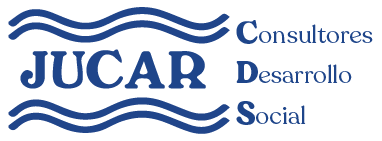This information collected is then compared with standards already set and if any deviation is found, necessary steps are taken. Therefore it helps in the detection of deviations in cost and time controlling them. Bank managers and investors will always look at your accounting cost to determine the financial https://business-accounting.net/role-of-financial-management-in-law-firm-success/ health of your business. ABC takes into account all activities required to manufacture a product, and assigns a value to them. For instance, two products may have the exact same ‘machine time’ to produce something. But the set up or testing times for one of the products may be significantly longer.
It helps company management to make decisions and is tailored to the specific needs of each separate firm. This differs from financial accounting, which must follow a set template and is used to inform people outside the company, such as investors, about its financial performance. Alternatively, cost accounting is meant for those inside the organization responsible for making critical decisions. Unlike financial accounting for publicly traded firms, there is no legal requirement for cost accounting. The main goal of lean accounting is to improve financial management practices within an organization. Lean accounting is an extension of the philosophy of lean manufacturing and production, which has the stated intention of minimizing waste while optimizing productivity.
Cost Controls
Modern methods of https://adprun.net/11-revenue-models-examples-tips-for-startups-to/ first emerged in the manufacturing industries, though its advantages helped it spread quickly to other sectors. Cost accounting is a managerial accounting process that involves recording, analyzing, and reporting a company’s costs. Cost accounting is an internal process used only by a company to identify ways to reduce spending. Budget is the estimation of income and expenditure over a period of time. Cost accounting provides statistical data for the preparation of the budget and proper and efficient planning. All costs can be qualified as prime cost, sunk cost, factory cost, direct cost, indirect cost, etc.
- When she’s away from her laptop, she can be found working out, trying new restaurants, and spending time with her family.
- Companies looking to expand their product line need to understand their cost structure.
- With marginal cost accounting, you can identify the point where production is maximized and costs are minimized.
- These variances can subsequently be traced down in order to get a better idea regarding what needs to be done in order to minimize the impact of standard costing.
- It eliminates unnecessary transactions and systems, reducing time, costs and waste.
None of these tools are used by financial accountants, who are more concerned with the production of financial statements. Activity-based costing (ABC) calculates costs based on the activity and effort used to produce a product or service. Unlike standard costing, this method can allocate a more accurate portion of the overhead costs to the factors responsible for increasing costs. Standard costing assigns “standard” costs, rather than actual costs, to its cost of goods sold (COGS) and inventory.
Learn How NetSuite Can Streamline Your Business
Investors can calculate a company’s operating expense ratio, which shows how efficient a company is in using its costs to generate sales. Life-cycle costing evaluates the cost of producing a product from start to finish. Unlike target costing, this costing method tracks the production costs through the life of the product. As a result, life-cycle costing can last for years longer than other costing methods. The U.S. government often uses this costing method when implementing building design and energy measures. The beauty of cost accounting is that a company can use a combination of systems to design a costing method that works best for that business.
Economic cost is a step further than typical bookkeeping basics and is often used by economists to compare two separate courses of action. Economic cost is calculated by taking your accounting cost, which has already been calculated, and also subtracting any implicit costs. Accounting cost, like accounting profit, follows the basic principles of accounting 101. In simpler terms, accounting cost is the overall cost of anything your business has paid for.
Certified Public Accountant
Bookkeeping for attorneys professionals work in a variety of industries and in companies of all sizes. Almost every organization, from health service providers to online retailers, needs cost accountants. To reduce and eliminate costs in a business, you need to know the formulas that are most often used in cost accounting. When you understand and use these foundational formulas, you’ll be able to analyze a product’s price and increase profits. Depending on an organization’s goals, cost can be evaluated through different lenses. To do this, cost accountants must be able to apply different methods and theories to the data they collect.
- If, for example, XYZ company expected to produce 400 widgets in a period but ended up producing 500 widgets, the cost of materials would be higher due to the total quantity produced.
- By analyzing it, the manager can know which added costs are avoidable and how to avoid them.
- You can access the software and manage your costs from any device with an internet connection, by simply downloading the Deskera mobile app.
- With this method, a company researches and evaluates the costs of a process before starting production.
- Unlike financial accounting for publicly traded firms, there is no legal requirement for cost accounting.
